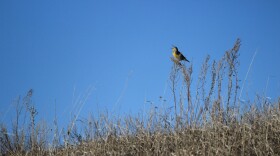I have heard a few complaints on all the tree sap that has dripped on cars this summer. My car is usually parked under the canopy of some ash, aspen, and oak. Little drops of that stuff are all over the car, and it has not been easy to clean it off the windshield! But it is probably not sap!
Most people lay the blame for this sticky stuff on our cars and other objects under the canopy of trees to sap. But it is much more likely the product of aphids. Aphids are in a group of insects known as sucking insects. They feed through sucking mouthparts that suck the sap from plants. But plant sap is mostly water. That means these insects must ingest copious amounts of sap to meet their dietary needs. What comes out the aphid’s other end is a sticky liquid that is called honeydew. It is not insect poop, but you get the idea.
Aphids are highly successful insects. They are also more common than many of us realize. They are only 1/16- 1/8 of an inch long, pear shaped, and can be of several different colors such as green, black, red, gray. They may occasionally be observed in small rather hairy or wooly looking clusters on plant parts. Although most species are of little concern, some species can damage garden and agricultural crops.
On a related topic, our aluminum canoe is stored under the canopy of some caragana shrubs. But it didn’t look very shiny this summer. It was covered with small black dots. I have not done much canoeing this summer, so the honeydew has collected on the canoe. And those spots of honeydew have been colonized by a mold. Apparently, several species of molds, often sooty molds, readily colonize these accumulations of honeydew. By the way, I cleaned off my canoe recently, and it was not an easy task!
So the next time you notice all those small dots of sap-like stuff on your car and other objects, do not be so quick to blame the plants. It is more likely that some aphids are feasting on the sap of some tree leaves above. It is not sap; it is honeydew!




